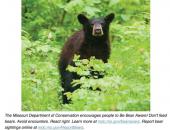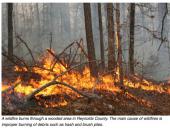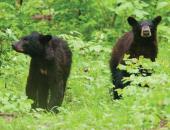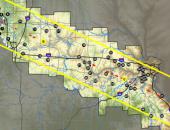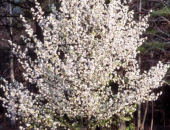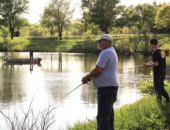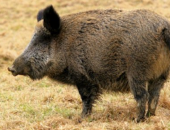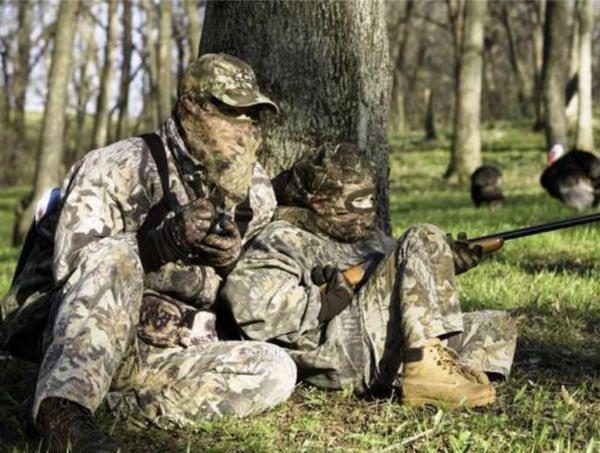
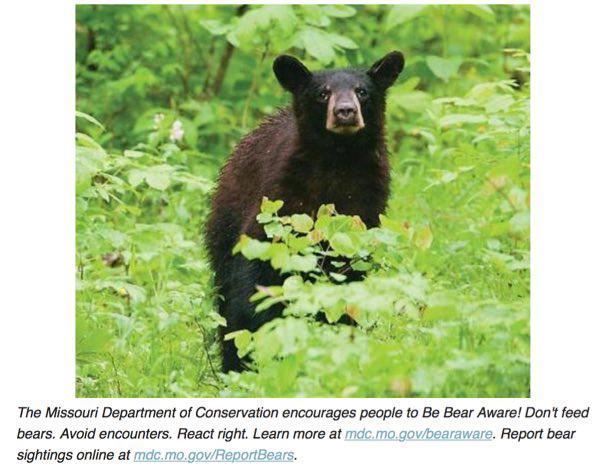
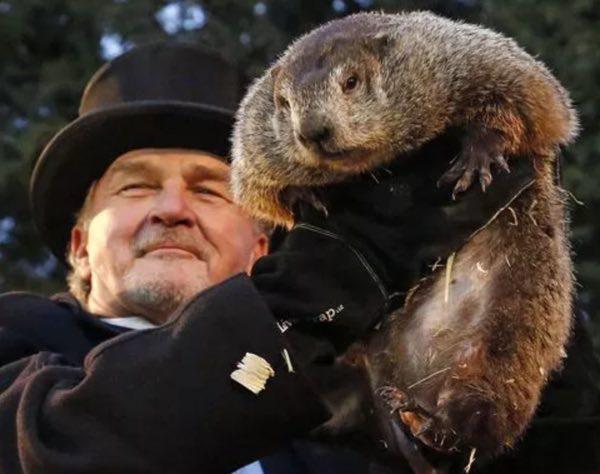
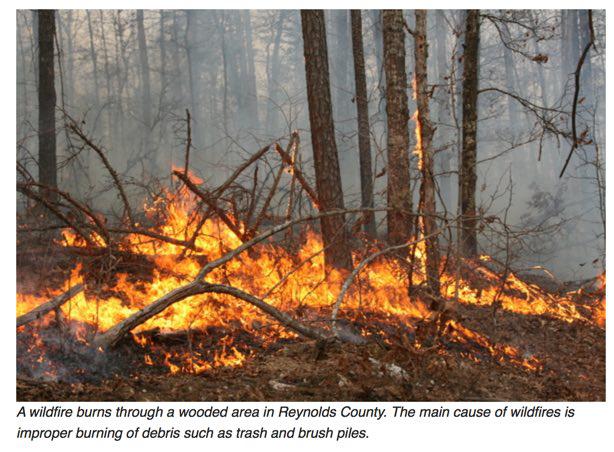
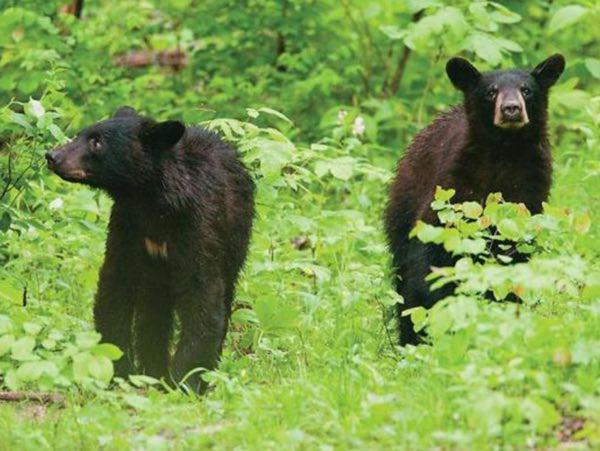
MDC reminder: Don’t feed bears
MDC reminds people to “Be Bear Aware” by not feeding bears and providing potential sources of food.
JEFFERSON CITY, Mo. – As summer turns to fall, Missouri's estimated 350 native black bears enter a phase called hyperphagiain which they eat heavily, accumulating a layer of fat that results in a 30 percent weight gain preparing them for hibernation. In preparation for hibernation, bears eat a wide variety of food including grasses and forbs, berries, ants, bees and wasps, beetles, crickets, fish, frogs, small rodents and other small animals. The Missouri Department of Conservation (MDC) reminds people to "Be Bear Aware" by not feeding bears and providing potential sources of food.
“A fed bear is a dead bear,” said MDC Wildlife Management Coordinator Alan Leary. “Feeding bears makes them comfortable around people and the places they associate with food from people, such as campsites, yards, and trash containers. When bears lose their fear of people by being fed, they may defend these food sources or territory. This can make them dangerous. When this happens, the bear has to be destroyed.”
Leary added a fed bear that becomes a problem in one place cannot be relocated to another.
"Once a bear associates people with food, its life is ruined,” Leary said. “Even if it is relocated, it will go in search of other places to get food from people, such as homes, residential areas, farms, and campsites. Common temptations include pet food or trash left outdoors, dirty grills or smokers, birdseed or other food at wildlife feeders, food at campsites, and gardens and orchards."
Avoid Attracting Black Bears
MDC offers these tips to avoid attracting black bears to possible food sources:
- Don't leave pet food sitting outside. Feed pets a portion they'll eat at each meal and remove the empty containers.
- Store garbage, recyclables, and compost inside a secure building or in a bear-proof container until the day of trash pick-up.
- Keep grills and smokers clean and store them inside.
- When camping be sure to keep cooking and cleaning areas separate from sleeping areas.
- Only use birdfeeders in bear country (which is primarily south of the Missouri River) when bears are typically hibernating -- from early December through early March -- or hang them at least 10 feet high and four feet away from any structure.
- Use electric fencing to keep bears away from beehives, chicken coops, vegetable gardens, orchards, and other potential food sources.
- Keep campsites clean and store all food, toiletries and trash in a secure vehicle or strung high between two trees. Do not burn or bury garbage or food waste.
- Report bear sightings by calling MDC at 573-522-4115, ext. 3080 or online at http://bit.ly/2ya2lhe.
Avoid Encounters and React Right
While close encounters with bears are uncommon in Missouri, MDC offers this advice when outdoors in black-bear country:
- Make noise while walking or hiking to prevent surprising a bear. Clap, sing, or talk loudly.
- Travel in a group if possible.
- Pay attention to the surroundings and watch for bear sign, such as tracks or claw or bite marks on trees.
- Keep dogs leashed.
- Leave a bear alone! Do not approach it. Make sure it has an escape route.
- If encountering a bear up close, back away slowly with arms raised to look larger. Speak in a calm, loud voice. Do not turn away from the bear. Back away slowly. Do not run.
- Report bear sightings by calling MDC at 573-522-4115, ext. 3080 or online at http://bit.ly/2ya2lhe.
When Hunting and Fishing
MDC offers this advice when hunting or fishing in bear country:
- Process or remove fish and game as quickly as possible, and alert others that there is game residue in the area.
- Keep a clean camp and store attractants where bears can’t access them.
- Stay alert and aware of your surroundings while hunting or fishing.
- Report bear sightings by calling MDC at 573-522-4115, ext. 3080 or online at http://bit.ly/2ya2lhe.
A native of Missouri, black bears were abundant throughout the state until the late 1800s when they were nearly wiped out from unregulated killing and from habitat loss when Ozark forests were logged. MDC research shows that a small number of native black bears survived and others from Arkansas moved north into Missouri. Over time, their numbers increased and continue to do so. Results of ongoing black-bear research by MDC staff and others show that the animals have been sighted in about half the counties in Missouri, primarily south of the Missouri River, with most bears located in the southern third of the state in the Missouri Ozarks.
